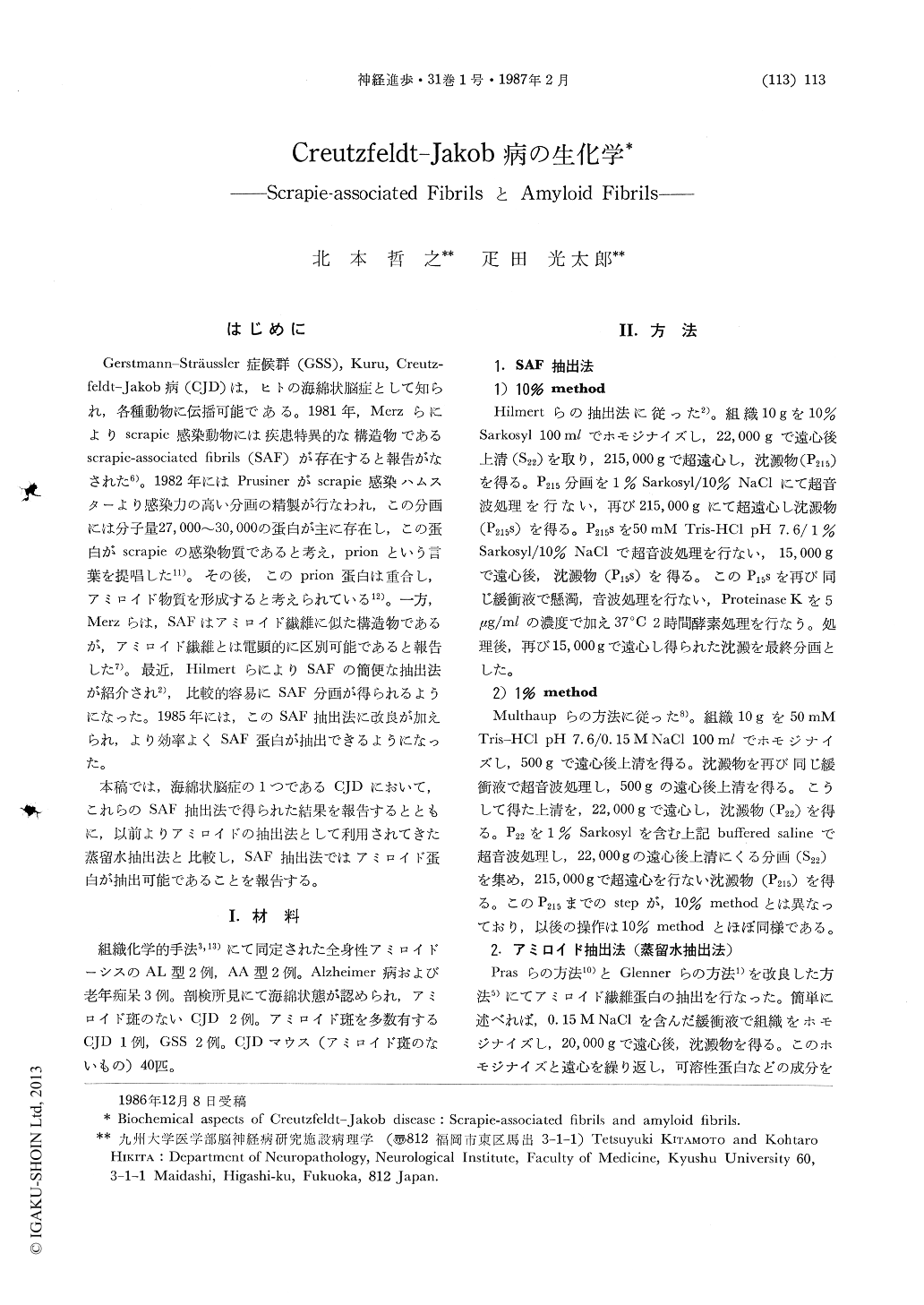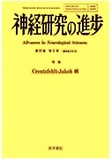Japanese
English
- 有料閲覧
- Abstract 文献概要
- 1ページ目 Look Inside
はじめに
Gerstmann-Sträussler症候群(GSS),Kuru,Creutzfeldt-Jakob病(CJD)は,ヒトの海綿状脳症として知られ,各種動物に伝播可能である。1981年,Mcrzらによりscrapie感染動物には疾患特異的な構造物であるscrapie-associated fibrils(SAF)が存在すると報告がなされた6)。1982年にはPrusinerがscrapie感染ハムスターより感染力の高い分画の精製が行なわれ,この分画には分子量27,000〜30,000の蛋白が主に存在し,この蛋白がscrapieの感染物質であると考え,prionという言葉を提唱した11)。その後,このprion蛋白は重合し,アミロイド物質を形成すると考えられている12)。一方,Merzらは,SAFはアミロイド繊維に似た構造物であるが,アミロイド繊維とは電顕的に区別可能であると報告した7)。最近,HilmertらによりSAFの簡便な抽出法が紹介され2),比較的容易にSAF分画が得られるようになった。1985年には,このSAF抽出法に改良が加えられ,より効率よくSAF蛋白が抽出できるようになった。
本稿では,海綿状脳症の1つであるCJDにおいて,これらのSAF抽出法で得られた結果を報告するとともに,以前よりアミロイドの抽出法として利用されてきた蒸留水抽出法と比較し,SAF抽出法ではアミロイド蛋白が抽出可能であることを報告する。
We identified fibrils from non-transmissible systemic amyloidosis, Alzheimer's disease and subacute spongiform encephalopathy using the purification method of scrapie-associated fibrils (SAF). The fibrils possessed the same nature of Congophilia, filamentous structure and molecular weight as amyloid fibrils, and were resistant to Proteinase K digestion. This SAF method makes for a rapid extraction from amyloid-laden tissues. The method, therefore, may purify non-transmissible amyloid alone or together with SAF proteins.

Copyright © 1987, Igaku-Shoin Ltd. All rights reserved.


